Are you planning to add more power to the V6 engine of your Nissan Maxima, and you’re wondering if it can be fitted with a turbo or supercharger? We researched this question thoroughly to bring you the best answer.
You’d be glad to know that the Nissan Maxima can be equipped with either a turbo or a supercharger.
Turbos and superchargers work almost in the same way. Their main difference is how they are powered and how they perform their function. Let’s talk more about these two in detail so that you’d know what to get for your Nissan Maxima. Read on!
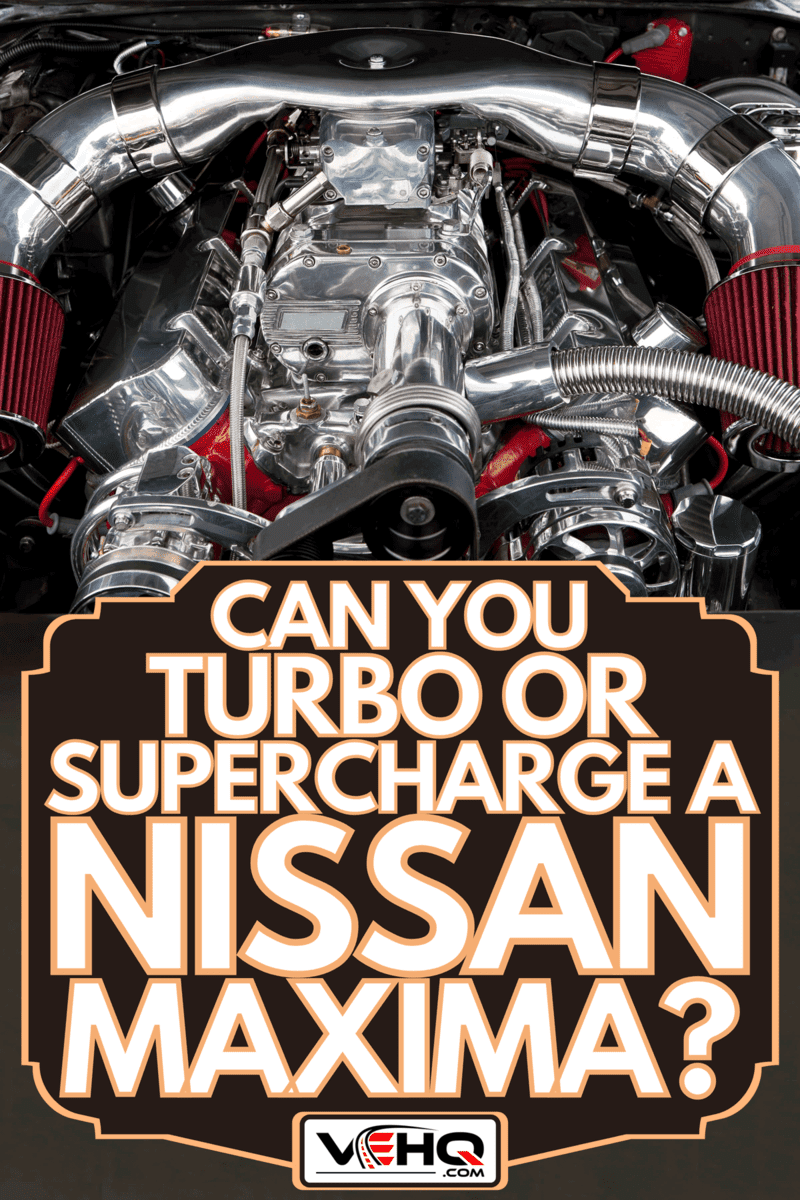
Turbo or supercharger for a Nissan Maxima?
Turbos and superchargers were developed by different people and for different applications but ended up serving the same purpose.
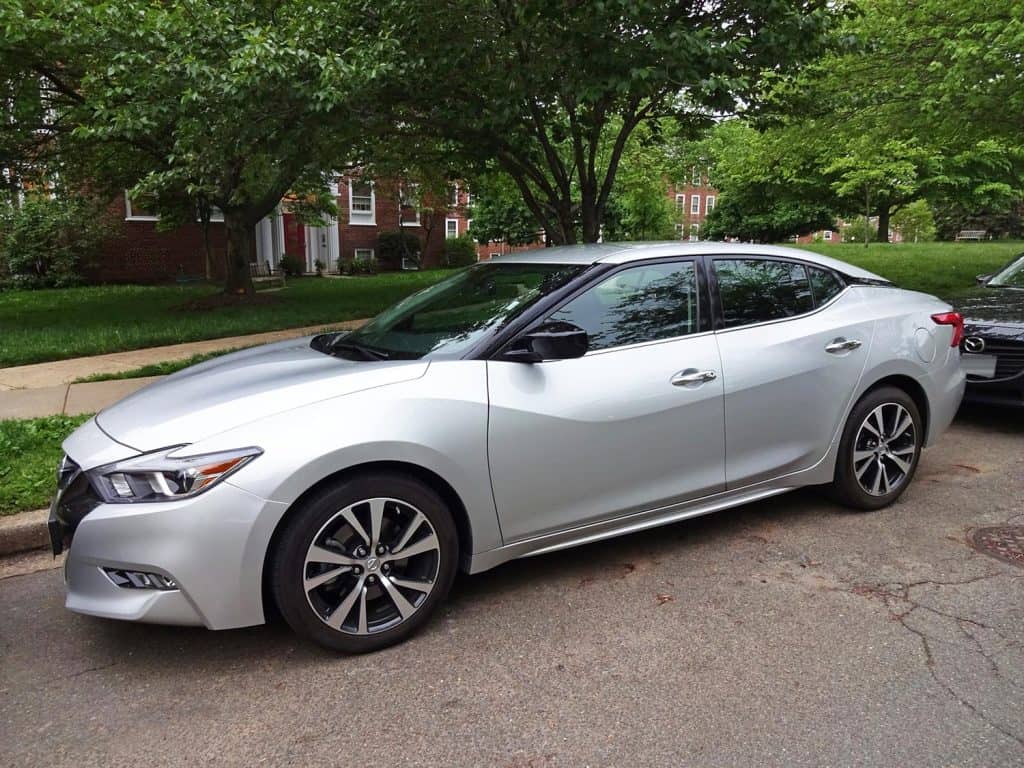
Turbo
A turbo is also known as a turbocharger. And a turbocharger is technically a supercharger. In the not-so-distant past, all forced induction devices were called superchargers.
However, the term supercharger nowadays is only used to refer to forced induction devices that are mechanically driven.
What drives a turbo?
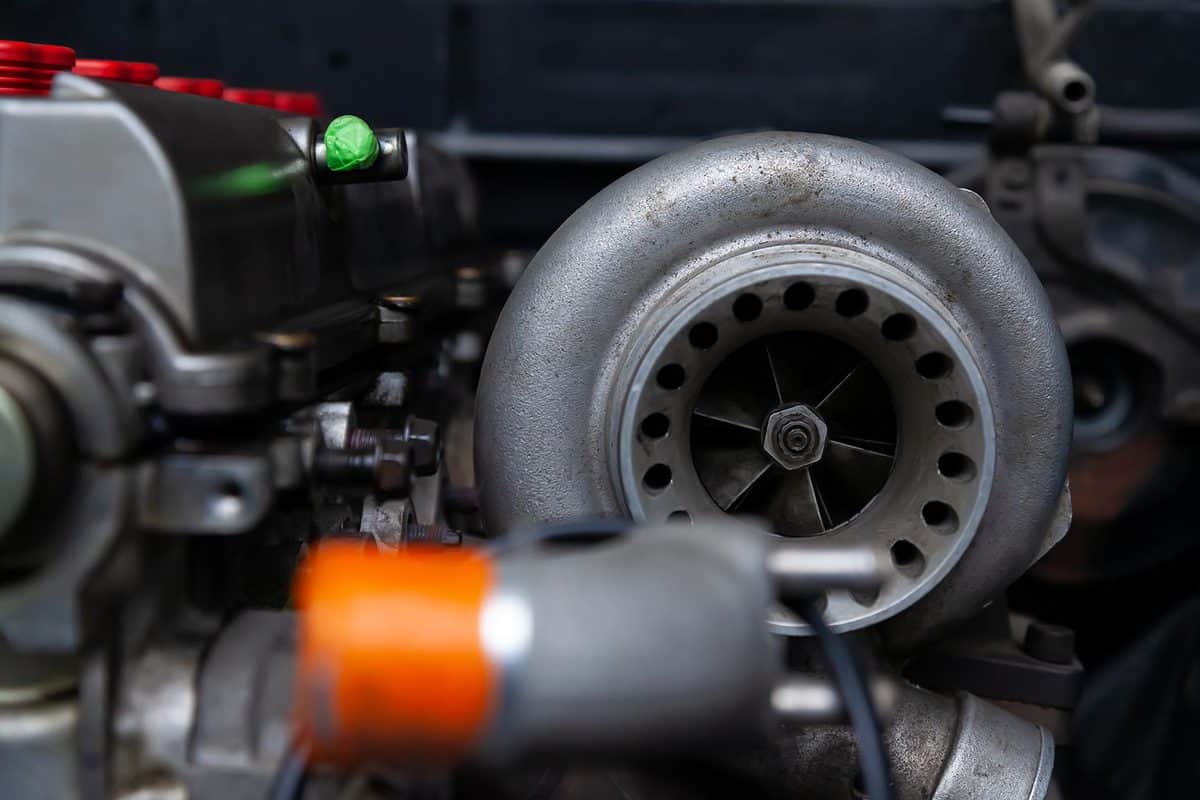
Turbos are powered by a turbine that uses the energy produced by exhaust gases.
The side that receives the engine’s exhaust gases is called the hot side of the turbo. Blazing hot exhaust gases—fresh from the engine’s combustion chamber—constantly pass through it, which gives it its name.
How do turbos work?
The turbine from the hot side of the turbo is connected to an impeller on the opposite side. The impeller sucks in air from a filtered inlet as it spins. The sucked-in air is compressed and is then pushed through the outlet channel and into the intercooler.
The compressive force increases the temperature of the air. The hot compressed air is sent to the intercooler to cool it down before it goes to the intake manifold.
History stopover—the turbocharger
Swiss engineer Alfred Büchi patented a design that used the exhaust gases of an engine to power a compressor in 1905. The compressor fed dense air into the combustion chamber of the engine. And thus, the idea of turbochargers were born.
What can compressed air do to your engine?
Compressed air allows your engine to bypass the limits of atmospheric pressure and engine size by increasing the amount of air sent into the combustion chamber. Increased amount of air means that the amount of fuel that can be burned is also increased.
More fuel burned, means more power output from your engine.
Supercharger
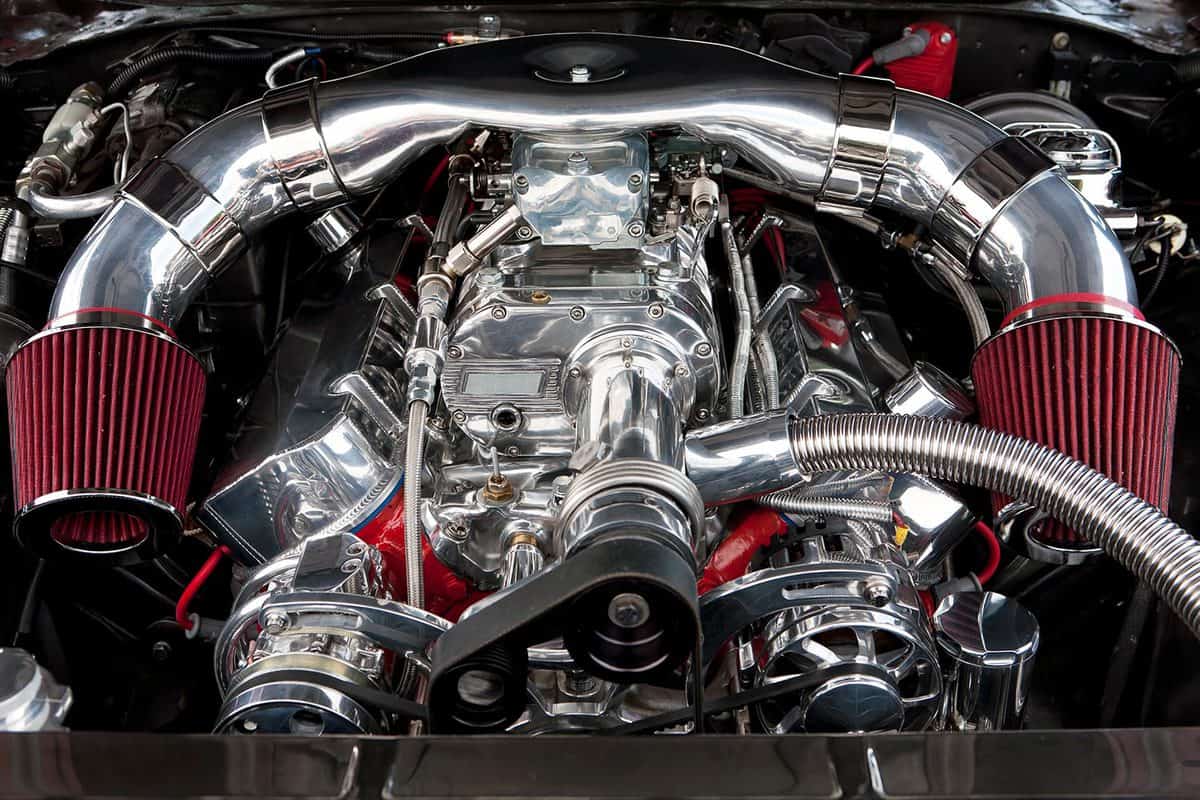
A supercharger is a specialized kind of air compressor that increases the density of air that goes into the engine of your Nissan Maxima. Compressed air allows your engine to get more air from each intake cycle.
What drives superchargers?
Superchargers are powered by a belt or chain that is connected to the crankshaft of the engine. This is the same way some components of your Nissan Maxima are powered.
The crankshaft starts to rotate when you start your engine. The rotation of the crankshaft creates rotation in the supercharger through the belt or chain that connects the two.
How superchargers work?
Superchargers use the energy from the rotation of the crankshaft to accelerate the air to very high speeds. Air is drawn into the supercharger by an impeller. The centrifugal force generated by the rotation of the impeller throws the air into a compressor housing, turning high-speed air into high-pressure air.
This kind of supercharger is called a centrifugal supercharger.
Twin-screw supercharger
A twin-screw supercharger, also called a Lysholm, is a positive displacement supercharger. This type of supercharger produces consistent air movement. This results in a consistent boost at any RPM, even right after you’ve started your engine.
Air is sucked from the intake at the back of the supercharger. The air is then compressed as it is forced towards the front.
The tapered design of the screw-like gears inside the twin-screw supercharger compresses the air along the tapered end before it is pushed into the intercooler and into the engine intake.
Roots supercharger
The roots supercharger is another kind of positive displacement supercharger and is also the most popular type. Roots superchargers are sometimes designed big to move larger amounts of air.
The roots supercharger is designed with two identical rotating lobes. These lobes trap air in the space between them as they rotate.
Air enters the inlet at the top, and then it gets moved around the outside of the rotors. The roots supercharger blows air through the intercooler and into the engine. Air gets stacked and compressed as more air is blown in. Compressed air increases the combustion inside the engine. This boosts engine performance.
Just like the twin-screw supercharger, the roots supercharger delivers the same amount of air regardless of RPM.
History stopover—roots supercharger
The roots supercharger design was first patented in 1860 by Philander and Francis Roots. It was initially designed to ventilate blast furnaces and mines.
Gottlieb Daimler or Daimler Benz patented its use on internal combustion engines. The first supercharged car was the Mercedes Kompressor model in 1923.
What are the advantages and disadvantages of turbos and superchargers?
Now that we have a good picture of how turbos and superchargers work, it’s time to get a good view of the rest of the advantages of each type and the disadvantages.
Advantages of turbochargers
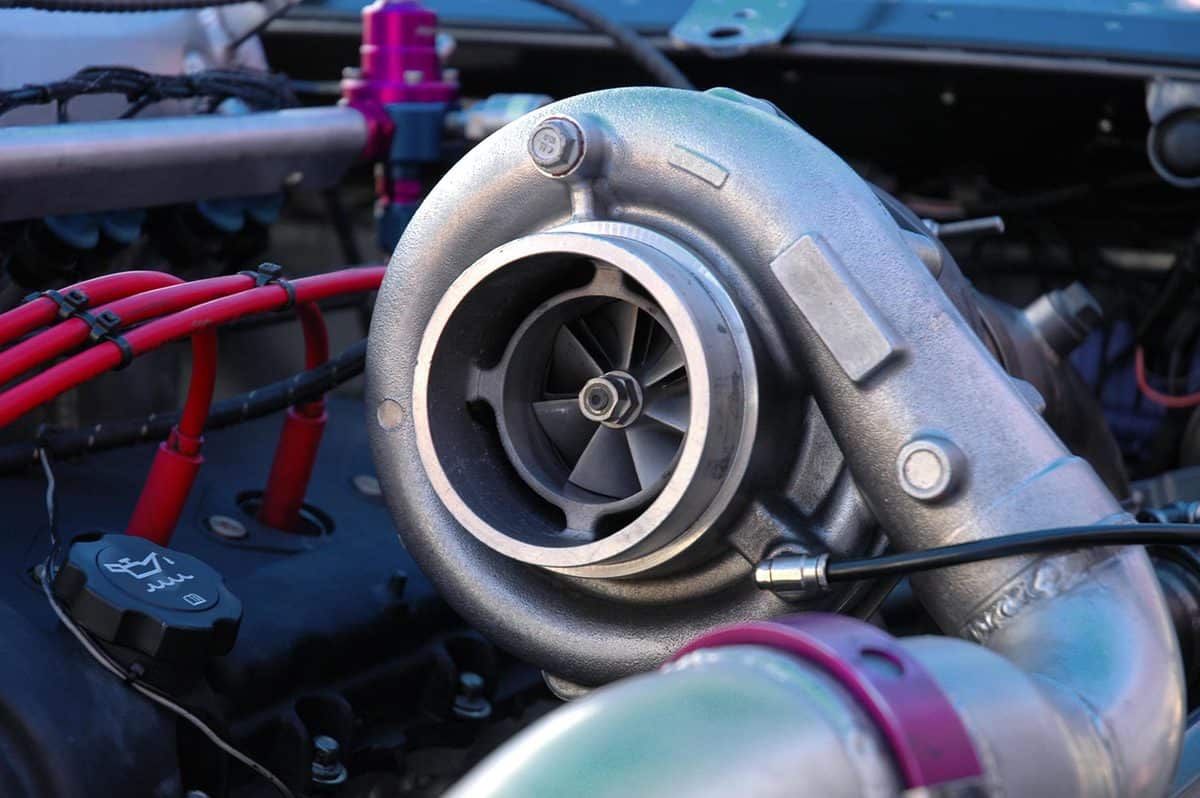
We all know that turbochargers increase the power output of engines. However, there are other advantages that it can bring to the table.
Turbochargers allow small engines to produce more power relative to their size. It also allows small engines to use less fuel when idle.
Turbochargers also improve car efficiency because it uses wasted energy from the car’s exhaust to power itself. It is easier to find a location to install a turbocharger inside the engine area of your car.
Disadvantages of Turbochargers
The biggest disadvantage of a turbocharger is lag. It needs time to spool up before it can provide any useful boost. Because of this, they do not work too well at low RPM.
Another disadvantage is the size of turbochargers. They are often designed to match engines within a specific RPM range.
Turbochargers can get very hot, and they often tap into the oil supply of the engine for lubrication. This might require additional plumbing in some turbocharger models.
Advantages and disadvantages of superchargers
There are three main types of superchargers that have their own set of advantages and disadvantages. So, we will be talking about them separately.
advantages of centrifugal superchargers
Centrifugal superchargers are often small and relatively easy to install in the engine cavity. Another advantage of a centrifugal supercharger is that it doesn’t produce too much heat. It also requires the least maintenance of the three types of superchargers.
It also works with less power compared to other superchargers. This means that the parasitic load to the engine is lower. Because of a low parasitic load to the engine, centrifugal superchargers are known to have no negative effect on the MPG of the car.
The boost level that it can provide is higher than other superchargers on a per-size basis.
disadvantages of centrifugal superchargers
However, centrifugal superchargers behave like turbochargers. They need time to spool and thus have a lag time before they can provide any meaningful increase in power.
And similar to turbochargers, centrifugal superchargers also do not work well at low RPMs. Another disadvantage is that it needs engine oil.
advantages of twin-screw superchargers
The main advantage of a twin-screw supercharger is that the power boost that it provides is consistent at any RPM. It is also quieter than other superchargers.
disadvantages of twin-screw superchargers
The main disadvantage of a twin-screw supercharger is that the installation is complicated. It needs to be installed where the crankshaft can be aligned with the twin-screw supercharger because it will be powered by the crankshaft.
It creates continuous compression and discharges compressed air regardless of the need for a boost at low speeds. The twin-screw supercharger has heating issues but is less compared to roots superchargers.
Advantages of roots superchargers
Similar to the twin-screw supercharger, the roots supercharger can provide a consistent amount of air per rotation. The constant amount of air supplied helps generate more power at lower RPMs.
Another advantage of the roots supercharger is that it doesn’t use engine oil. It does have its own oil chamber and needs to be supplied with its own special oil.
disadvantages of roots supercharger
One of its biggest disadvantages is that it is the least efficient of the three types of superchargers. The roots supercharger produces the least amount of horsepower, torque, and boost of the three superchargers too.
It also draws the most power from its parasitic connection of all three types of superchargers.
Additionally, it is very difficult to install because it needs to be installed on top of the engine. Moreover, modification is needed on the inlet manifold to install a roots supercharger.
The roots supercharger requires the most maintenance of the three types, and it can significantly reduce the MPG of a car.
Conclusion
The Nissan Maxima can be equipped with either a turbo or a supercharger. Choosing between these two—including the subtypes of superchargers—is dependent on personal preference.
If you prefer to have consistent power boost, then the roots or twin-screw supercharger would be best. However, if you prefer to have that boost only at higher RPMs where it can really count, then the turbocharger or the centrifugal supercharger would be your best candidates.
If you enjoyed this article, you might be interested in the following articles too:
